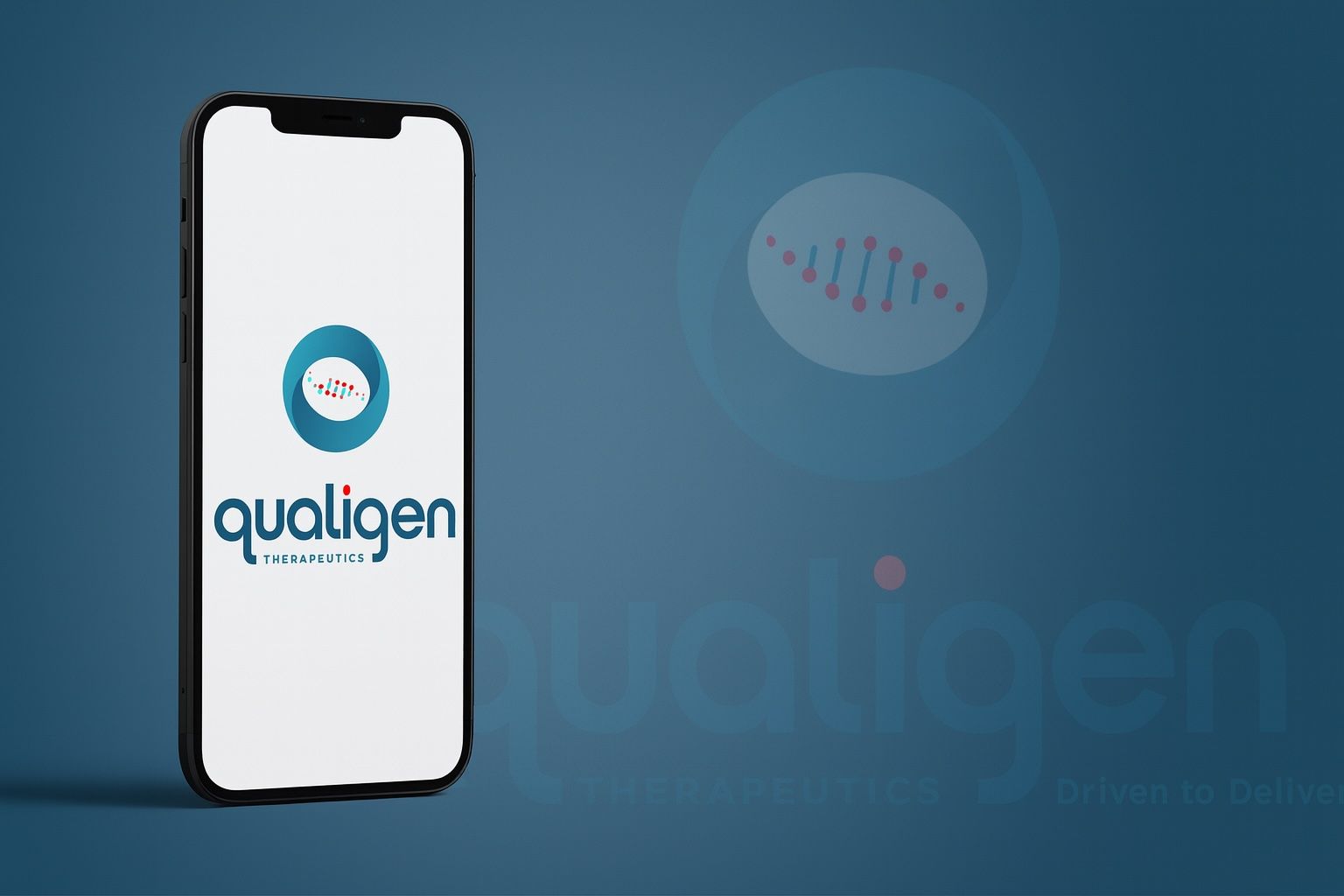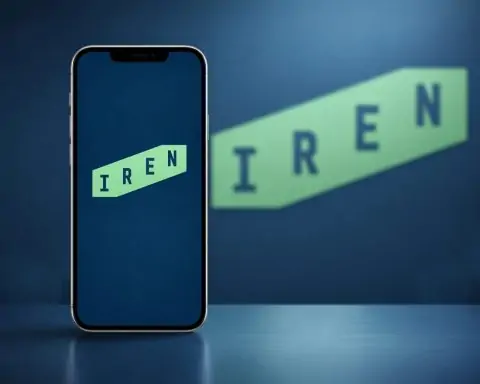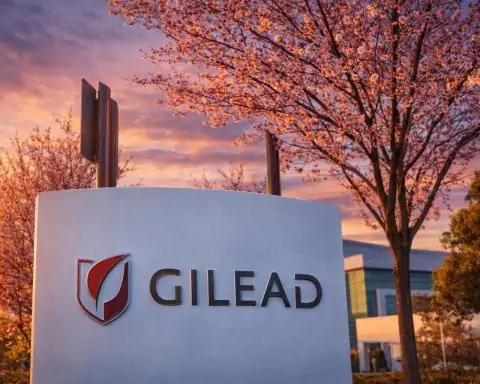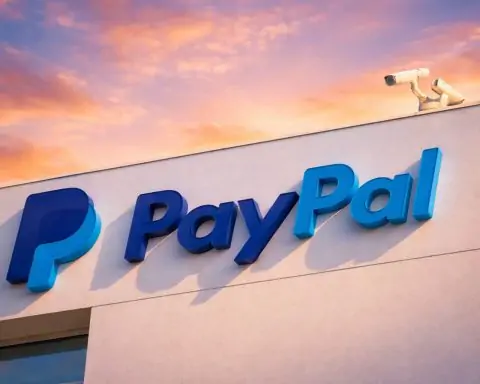- Stock Surge: Qualigen Therapeutics (NASDAQ: QLGN) shares exploded on Oct. 23–24, 2025. The stock jumped about +62% in after-hours trading on Oct. 23 (closing around $5.37) [1]. By Friday’s pre-market on Oct. 24 it was up roughly 100%, briefly trading near $7 before settling in the mid-$5 range [2] [3].
- BitGo Crypto Deal: The catalyst was a surprise announcement (Oct. 23) that Qualigen would partner with crypto custodian BitGo to execute a $30 million “C10” crypto treasury strategy. The plan is to invest in a market-cap-weighted basket of the world’s top 10 cryptocurrencies (excluding stablecoins) [4].
- Executive Quotes: Co-CEO Jerry Wang framed the move as part of Qualigen’s tech-forward strategy, saying the BitGo deal “allows us to further diversify our corporate treasury with digital assets, reflecting our commitment to both financial resilience and leadership in the evolving digital economy” [5]. BitGo CEO Mike Belshe added that this “$30 million multi-asset allocation demonstrates the growing confidence among enterprises in building a digital-first treasury strategy” [6].
- Strategic Shift: This crypto pivot follows a broader repositioning. In late September, majority owner Faraday Future poured ~$41 million into Qualigen (via a PIPE deal) to accelerate a Web3/crypto focus [7]. Qualigen even plans a new “CXC10” crypto brand as part of this strategy. The company also appointed Kevin Chen (a veteran financial executive) to its board this month [8].
- Analyst Take: Despite the rally, experts remain cautious. TipRanks notes that QLGN’s fundamentals are weak, giving it an “Underperform” rating due to “weak revenue, heavy losses, and financial strain” [9]. Investing.com’s analysis similarly flags Qualigen’s precarious finances (a very low current ratio and ongoing losses) and says the stock currently appears overvalued against its financials [10].
- Uncertainties: Qualigen is still a tiny, pre-revenue biotech with early-stage R&D. Its lead drug (QN-302 for pancreatic cancer) is only in Phase I [11]. The company has previously had to scramble to meet Nasdaq listing rules (raising emergency capital in July 2025) [12]. Any long-term upside depends on very uncertain drug trials and the success of this unconventional crypto strategy.
Stock Rally on Crypto News
On Oct. 23, after the market close, Qualigen released a press statement announcing its BitGo partnership [13] [14]. In after-hours trading, that news sent QLGN skyrocketing: Benzinga reported a 62.6% jump after-hours (from $3.53 to about $5.74) [15]. The frenzy continued into Oct. 24: TipRanks noted the stock was up more than 100% pre-market on Friday, reflecting a dramatic market reaction [16]. By midday Friday the stock was trading in the $5–$6 range, roughly double its pre-news price. (For context, QLGN had been down roughly 16% year-to-date prior to the rally [17].)
New Crypto Treasury Strategy
Qualigen’s deal with BitGo is highly unusual for a biotech: the company is effectively turning part of its cash treasury into a cryptocurrency investment fund. Under the terms announced, Qualigen will allocate about $30 million (using BitGo’s institutional trading and custody services) to buy a weighted basket of the top 10 coins [18]. BitGo’s over-the-counter trading desk and cold storage infrastructure will manage these digital assets.
Company leaders pitched this as a way to strengthen the balance sheet. In the GlobeNewswire press release, Qualigen Co-CEO Jerry Wang said the partnership “allows us to further diversify our corporate treasury with digital assets, reflecting our commitment to both financial resilience and leadership in the evolving digital economy” [19]. BitGo’s Mike Belshe said that the $30M allocation “demonstrates the growing confidence among enterprises in building a digital-first treasury strategy” [20].
This “C10” treasury initiative actually builds on a program Qualigen announced on Oct. 12 (its official launch of C10 Digital Asset Treasury purchases) – news that had quietly flown under the radar before this week. The Oct. 23 BitGo deal formalizes the arrangement with a major crypto firm.
Background and Pipeline
Qualigen Therapeutics is traditionally a small biotech focused on cancer drugs. It is headquartered in Carlsbad, CA and has just a few employees [21]. Its lead program, QN-302, is a G-quadruplex–inhibitor drug in Phase I trials for pancreatic and other cancers [22]. Beyond QN-302, Qualigen has other R&D projects (like a RAS inhibitor and a hematology compound), but none are near commercialization. The company has no approved products or revenue yet [23].
Because of its tiny market cap (~$6 million as of this week [24]), Qualigen relies on outside funding. In 2024–25 it raised capital repeatedly (including a $4.5M private placement in July 2025) just to stay solvent and in compliance. That July 2025 offering was sparked by a Nasdaq warning: Qualigen had fallen below the required $2.5M stockholders’ equity threshold and risked delisting [25]. The infusion restored compliance, but the company warned that future compliance was not guaranteed. Now, with the Faraday-led $41M pipe and this $30M crypto commitment, Qualigen has large new capital – but also a very different strategy than before.
Market Reaction and Expert Views
Investors have clearly bid up the stock on the crypto news, but analysts caution the rally may be driven more by speculation than by improved fundamentals. Automated analytics underscore the cautionary backdrop. For example, TipRanks notes that based on QLGN’s latest financials, an AI-driven analyst model rates the stock as “Underperform”, citing “weak revenue, heavy losses and financial strain” [26]. Similarly, an Investing.com analysis highlights that Qualigen’s financial health score is very low (1.56) and its current ratio is only 0.71, indicating liquidity risk [27]. That report also observes that QLGN is trading well above levels justified by its fundamentals.
In short, experts emphasize that this biotech is still unprofitable and highly speculative. Many investment services show few (if any) buy-side ratings or price targets. For context, the company’s second-quarter report (released Aug. 14) showed net losses of ~$1.7M and virtually no revenue, and it even disclosed a one-time $5.1M capital raise that month [28]. As one analysis bluntly noted, Qualigen’s stock “has declined 13.54% year-to-date” and “is overvalued” compared to fair value [29].
Nevertheless, some speculative investors see potential upside. The theory is that (a) cryptocurrencies have been rising, and (b) Faraday’s backing could eventually roll out new products or even NFTs under the CXC10 brand. Trading volume on QLGN has spiked to multi-year highs, and short-term technical indicators are extremely volatile. It’s worth noting that in recent weeks the stock’s price swings have been huge even by small-cap standards – one automated report highlighted 123% overnight moves in September [30].
Outlook and Forecast
Because Qualigen is such a small, thinly traded micro-cap, formal analyst coverage is extremely limited. There are no widely-published third-party forecasts or price targets that are still considered reliable. Some databases of consensus see a negative “upside” (i.e. predicted downside) for QLGN, reflecting that the average target price is below current levels. In other words, even after this recent surge, data suggest the stock might be priced for perfection.
Looking ahead, any medium-term forecast depends on two very uncertain factors: the outcome of QN-302’s clinical trials, and the success (or failure) of the crypto treasury plan. If Qualigen can demonstrate solid trial results for its cancer drug, the biotech fundamentals would improve – but that could be years away. Alternatively, if the C10 crypto assets grow in value, it could shore up the balance sheet and potentially unlock further funding or opportunities. But many skeptics warn that one cannot easily turn a biotech into a crypto fund: regulatory changes in the crypto world, market crashes (as seen in 2022) or security breaches could all destroy value in those $30M holdings.
Some specific points to watch: In mid-November 2025, Qualigen must again convince Nasdaq it meets listing rules (filing the Q3 report on time and maintaining equity). Failure to do so would likely mean delisting and effectively shutting down the stock. The company also faces typical biotech hurdles – raising money when needed (diluting existing shares), and competing with much larger pharma in cancer research.
Risks and Uncertainties
Investors should be very aware of the risks. As noted, Qualigen has no revenue or products yet [31]. Its only assets are experimental drugs and now a bit of crypto. The company’s balance sheet is thin: at the end of 2024 it had only about $1.2M cash on hand and was burning through millions a year in losses [32]. Continued dilution is likely if more money is needed.
There’s also governance risk. Qualigen has had multiple leadership and auditor changes this year [33] [34], and being mostly owned by Faraday Future raises questions about alignment of interests. Technically, the BitGo partnership and crypto holdings are subject to their own regulatory and cybersecurity risks, which biotech investors may not fully appreciate.
Finally, the stock’s high volatility means it could just as easily swing downward as upward from here. Traders who chased this rally are taking a big gamble – if the crypto market cools or the stock’s bubble bursts, QLGN could quickly give back its gains.
Sources: Company press releases [35] [36] [37], Benzinga [38], Investing.com [39] [40], TipRanks [41] [42], StockAnalysis (company overview) [43], and financial commentary [44] [45]. All data and quotes as of Oct. 24, 2025.
References
1. www.benzinga.com, 2. www.benzinga.com, 3. www.tipranks.com, 4. www.stocktitan.net, 5. seekingalpha.com, 6. seekingalpha.com, 7. www.investing.com, 8. www.investing.com, 9. www.tipranks.com, 10. www.investing.com, 11. stockanalysis.com, 12. www.ainvest.com, 13. www.globenewswire.com, 14. www.stocktitan.net, 15. www.benzinga.com, 16. www.tipranks.com, 17. www.benzinga.com, 18. www.stocktitan.net, 19. seekingalpha.com, 20. seekingalpha.com, 21. stockanalysis.com, 22. stockanalysis.com, 23. stockanalysis.com, 24. www.investing.com, 25. www.ainvest.com, 26. www.tipranks.com, 27. www.investing.com, 28. www.marketscreener.com, 29. www.investing.com, 30. www.ainvest.com, 31. stockanalysis.com, 32. www.ainvest.com, 33. stockanalysis.com, 34. www.marketscreener.com, 35. seekingalpha.com, 36. seekingalpha.com, 37. www.investing.com, 38. www.benzinga.com, 39. www.investing.com, 40. www.investing.com, 41. www.tipranks.com, 42. www.tipranks.com, 43. stockanalysis.com, 44. www.ainvest.com, 45. www.investing.com







